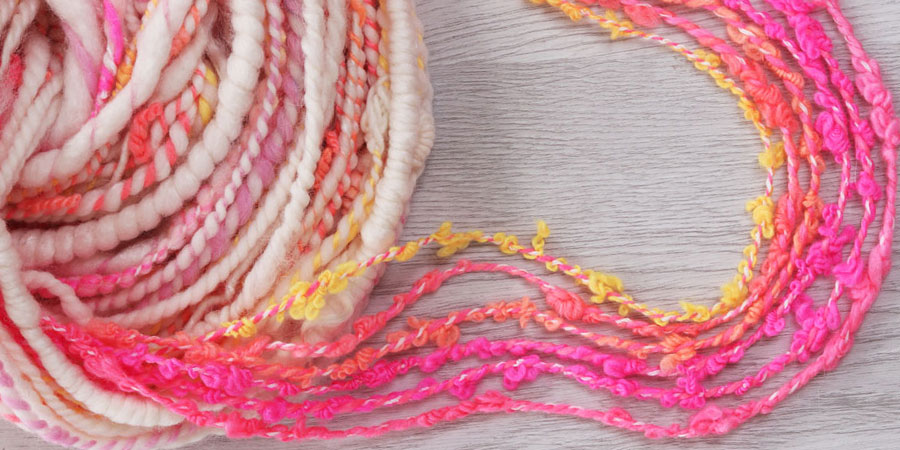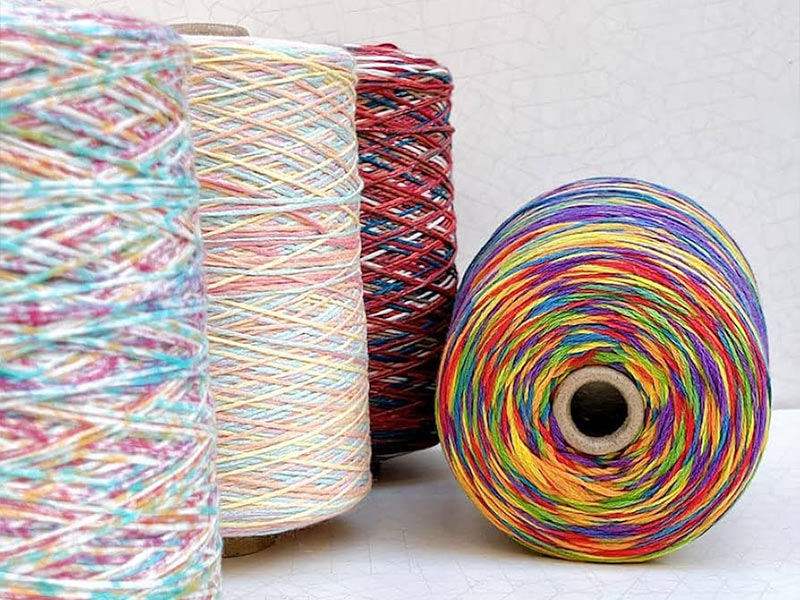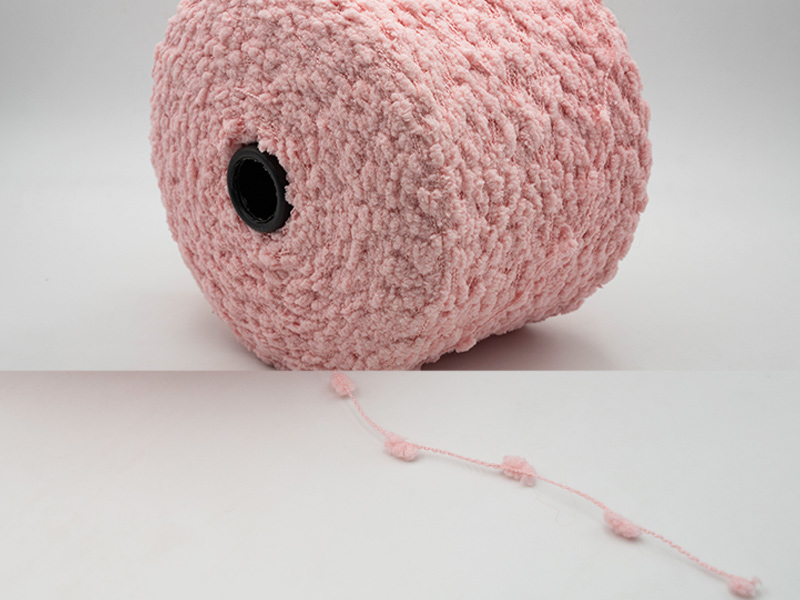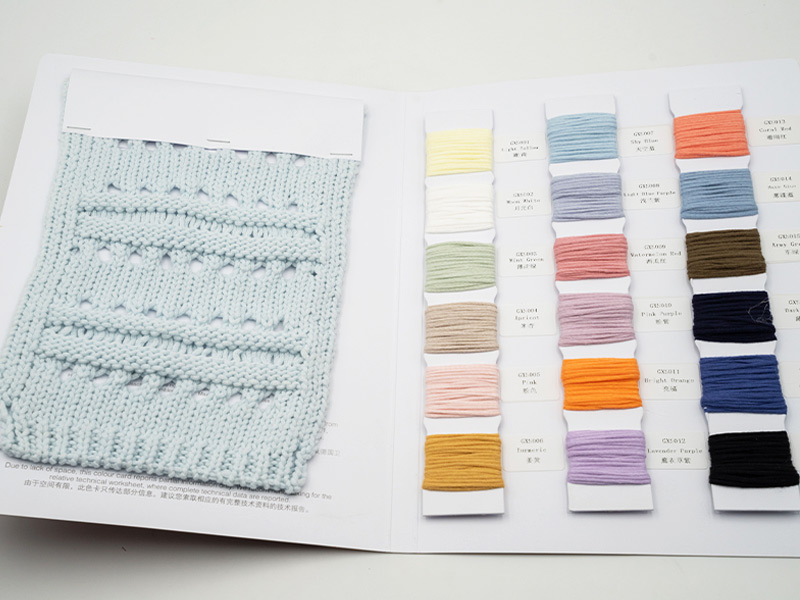The Secret Behind “Fuzzy Yarns”: How Different Fancy Yarns Make Soft, Fluffy Textures
In the fall and winter, nothing feels warmer or more welcoming than yarns with a soft, fuzzy touch. These “hairy” fancy yarns not only add warmth to any fabric, but they also give it a sense of texture, depth, and life. But how do these fluffy effects happen?
Let’s take a closer look at five common types of fuzzy fancy yarns: crochet yarn, blowing yarn, raised yarn, sueded yarn, and bouclé yarn. We’ll talk about how each one gets its unique surface effect, how comfortable it is, how much it costs, and what it’s good for.
Yarn for crochet
How it’s made: To make crochet yarn, fibers of different lengths or thicknesses are added to the yarn structure, or elastic threads are added that naturally make loops while the yarn is being spun. The texture looks like the look of crochet stitches that were made by hand.
Comfort: Soft and a little three-dimensional, with a hand-made feel that is gentle on the skin.
Price: Medium to high because it takes longer to make.
Usefulness: Great for shawls, scarves, or cardigans that have a handmade or artisanal look. But the fluffy loops make it less good for clothes that are tight or rub against each other a lot.
Pros: It has a soft feel and a lot of visual depth.
Disadvantages: Expensive and easy to get caught on

Spray Yarn
How it’s made: This yarn is made by blowing air onto a core yarn and attaching fine short fibers like acrylic, nylon, modal, or mohair. This makes a soft halo of fibers that looks like animal fur.
Comfort: Very soft and silky, and it feels light on the skin.
Price: It depends on the fiber used, but it’s in the middle to high range.
Use in real life: Often used in yarns that look like fur, like faux mink or rabbit hair. Great for wraps, sweaters, and scarves that need to be warm and light at the same time.
Pros: ✅ Looks naturally fluffy and luxurious
Cons: ✅ Can shed or flatten with friction; needs to be washed and cared for gently
Yarn that has been brushed
To make raised yarns, you use a machine to brush or raise the yarn surface and pull out small amounts of fiber to make a smooth, fine nap layer.
Comfort: It feels smooth, warm, and full-bodied when you touch it.
Price: Fair; production is steady, and the product is widely used.
Common uses: sweatshirt yarns, knitted wool blends, and thermal fabrics. The raised surface keeps you warmer without adding much weight.
Pros: It has a nice, even nap, feels soft in the hand, and keeps you warm.
Disadvantages: Not being able to control the fibers well enough can cause them to break or pill.
Yarn that has been sanded
How it’s made: Fine sanding rollers or carbon brushes lightly rub against the yarn to make it suede. The process gently lifts microfibers on the surface, making a soft “peach skin” look.
Comfort: Very soft and smooth, doesn’t bother the skin.
Price: Cheap and easy to make in large quantities.
Use: Great for light knits, loungewear, and casual tops. The surface is matte and elegant, giving it a high-end feel without adding extra thickness.
Pros: Feels soft on the hands and is good for the skin
Cons: Only a little fuzzy; doesn’t have a lot of texture depth.
Boucle Yarn
How it’s made: Bouclé yarn is made by twisting two or more strands of yarn together at different tensions. This makes one strand form regular or irregular loops on the surface.
Comfort: Soft and stretchy, with a deep, three-dimensional feel.
Price: High, because it needs very precise spinning control.
Practical use: The classic fabric for coats and tweeds in the “Chanel style.” Its sculptural loops add texture and interest to the eye, but it’s not the best choice for tight-fitting clothes.
Pros: Unique shape, very decorative
Cons: Easy to get stuck; needs to be handled with care
In short Comparison
|
Type |
Feature |
Feel & Comfort |
Price |
Common Uses |
|
Crochet Yarn |
Loop texture |
Soft to medium-high softness; textured and three-dimensional |
Medium–High |
Scarves, cardigans |
|
Spray Yarn |
Air-blown halo |
Very soft and lightweight |
Medium–High |
Sweaters, wraps |
|
Brushed Yarn |
Even short nap |
Warm, cozy, and comfortable |
Medium |
Sweatshirts, thermal wear |
|
Sanded Yarn |
Fine soft nap |
Smooth, skin-friendly, non-irritating |
Medium–Low |
Casual knits, loungewear |
|
Bouclé Yarn |
Loop surface structure |
Fluffy, soft, and elastic |
High |
Coats, suits, tweeds |
Last Thoughts
There is a unique mix of technique and creativity behind every “fuzzy” yarn.
Crochet yarn has a hand-made charm, blowing yarn feels like fur, raised yarn adds warmth and fullness, sueded yarn gives a smooth, polished look, and bouclé yarn adds three-dimensional depth and a couture look.
When you combine these techniques, you get the wide range of fancy yarns. New textures turn simple fibers into fabrics that are warm, artistic, and full of emotion.
Related News
Discover more about the latest developments in the yarn industry, explore articles on development trends and innovative technologies, and provide you with more industry insights.

A Designer’s Guide to Picking the Best Fancy Yarn for Your Collection
As a fashion or textile designer, you know that the fabric you choose may make or break your collection. Fancy yarns are fantastic for crafting one-of-a-kind things that people will remember because they have distinct textures, depths of color, and versatility in how they are made. But it could be hard to pick the appropriate one because there are so many varieties of lovely yarn.

Toothbrush Yarn Manufacturer Guide | Fancy Yarn Solutions for Fashion & Home Textiles
The world of fancy yarns is constantly evolving, with new innovations pushing the boundaries of fabric aesthetics and texture. Among these innovations, toothbrush yarn stands out due to its unique spiky texture, three-dimensional volume, and bold visual appeal. As fashion and textile designers search for materials that offer both function and form, toothbrush yarn is rapidly gaining attention as a versatile and modern solution.

Chronology of Fancy Yarn Color Trends
Fancy yarn is not only a choice of textile raw material but also a carrier of fashion and aesthetic changes. Its color evolution is influenced not only by global color trends but also closely related to technological innovation, cultural movements, and social psychology. Reviewing the past decades, the shifts and patterns of fancy yarn colors become clear.

